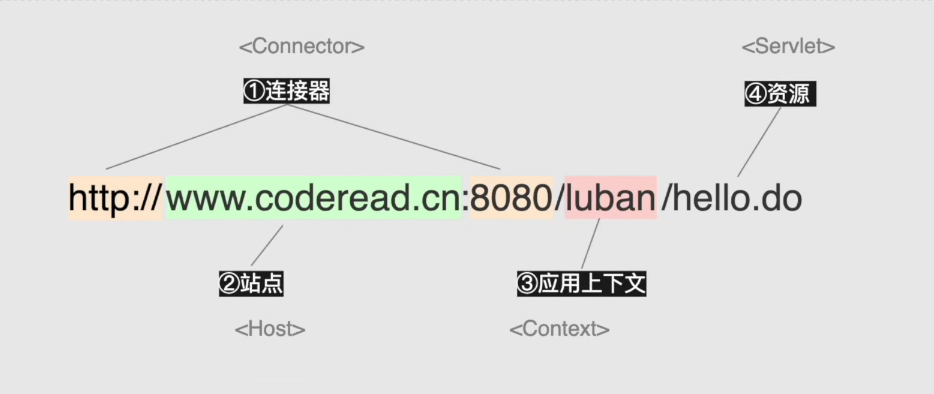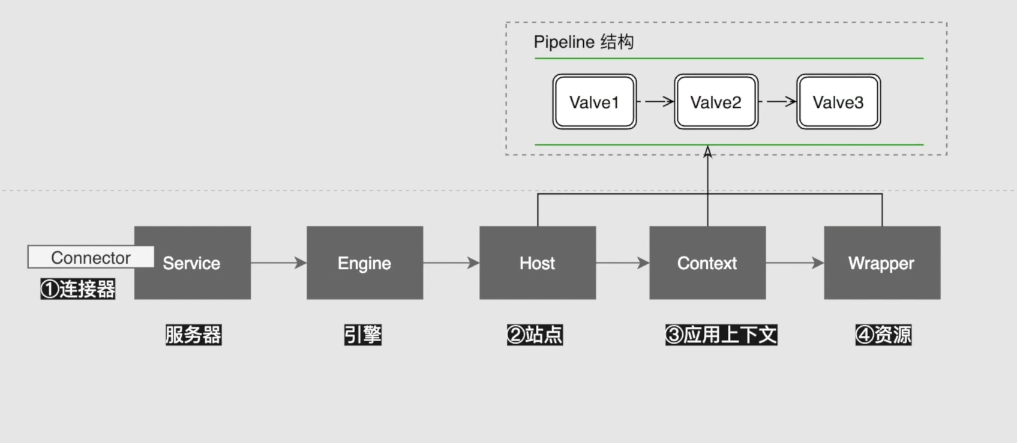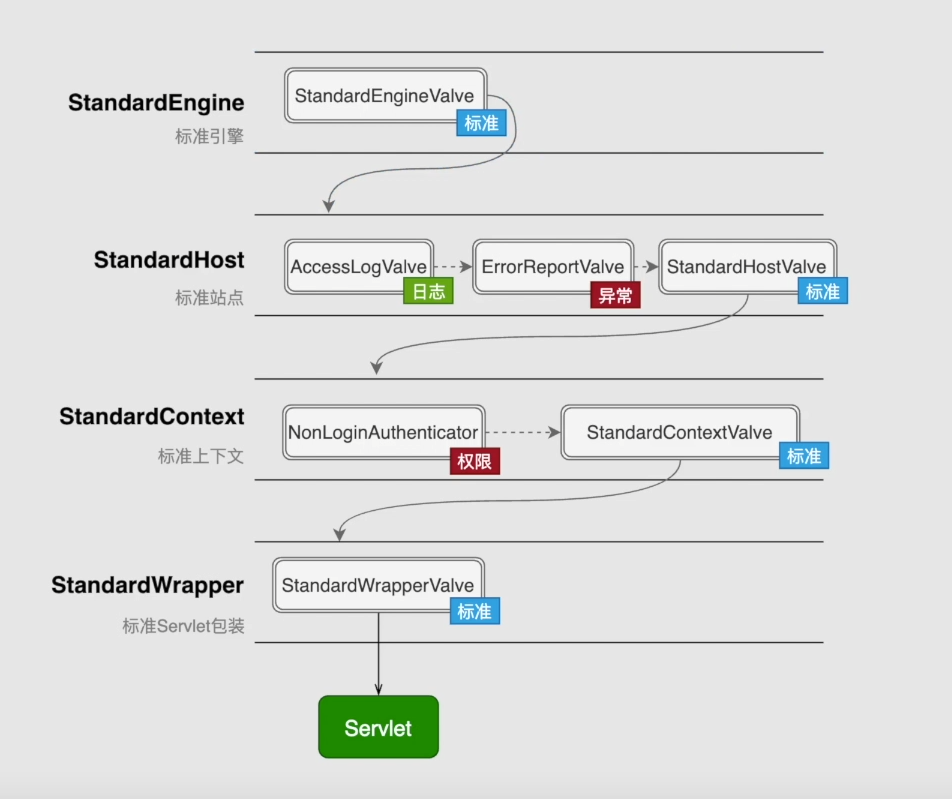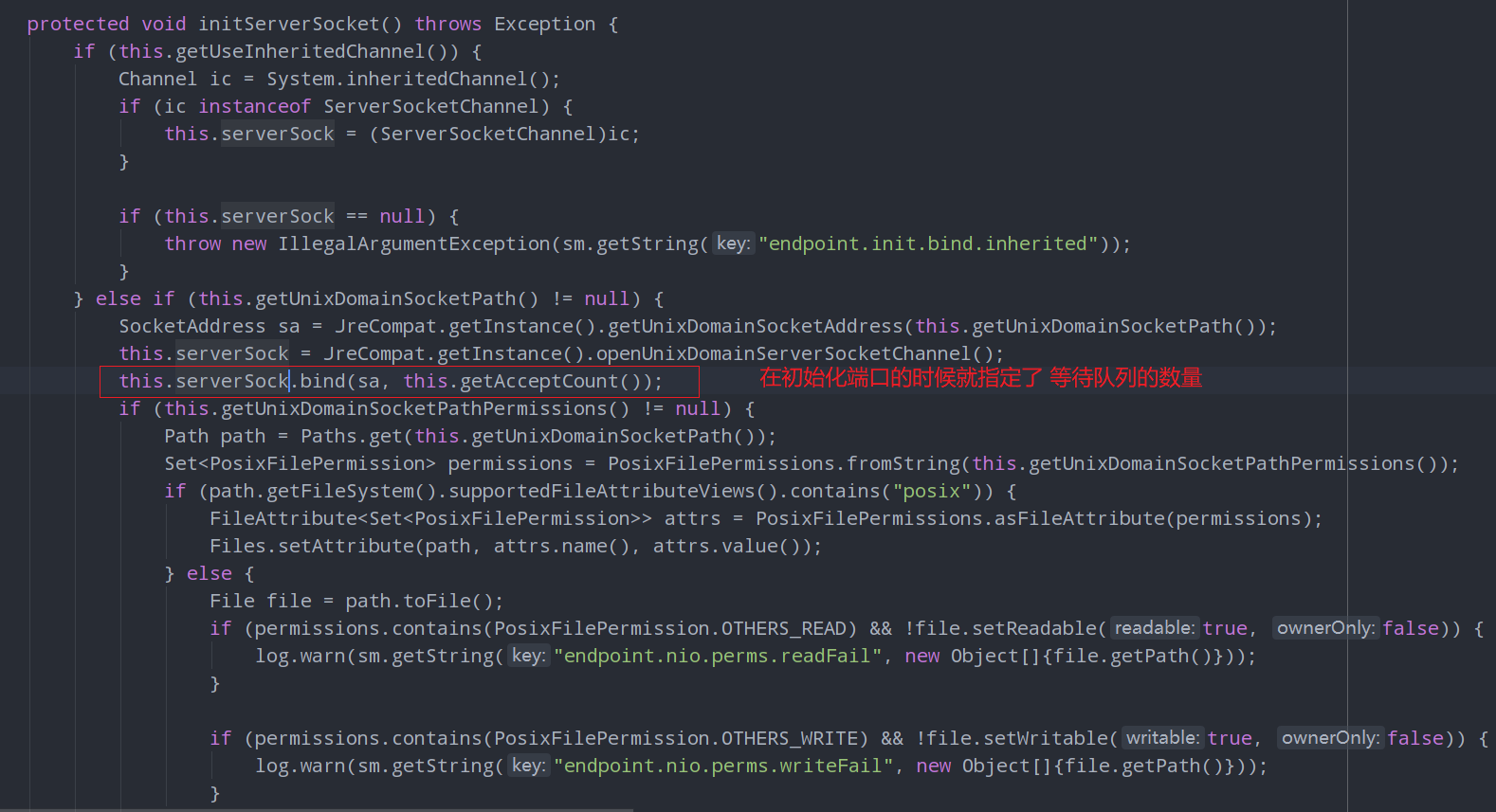Tomcat概述
Tomcat概述
1. Tomcat 核心组件

Connector(连接器): 由 端口号 + 协议 组成。
2. 核心组件协作过程

要点:
- 连接器可以有多个,不同的连接器可以对应同一个站点
- 同一个连接器下,可以有多个站点
即,连接器和站点之间的关系是多对多的。
站点和应用上下文之间是一对多的关系,即一个站点对应该站点下多个应用上下文。站点和资源同样是一对多的关系
3. 源码剖析
3.1 server.xml

Connector(连接器):
- port:端口
- protocol:协议
Host(站点):
- name: 域名
- appBase:站点对应资源的路径,可配置全路径或者相对路径,相对路径是相对于tomcat的根路径。
- unpackWARs:是否自动将WAR文件解压
- autoDeploy:是否自动部署

Context(应用上下文): 在Host对应的appBase目录下的文件夹是隐式的Context, 通过Context标签可以显示的设置Host下的Context
3.2 请求流程分析

Engine、Host、Context 每一层都有自己的一个pipline结构,里面包含多个Valve


Tomcat 请求处理源码入口为:
2
3
4
5
6
7
8
9
10
11
if (postParseSuccess) {
//check valves if we support async
request.setAsyncSupported(
connector.getService().getContainer().getPipeline().isAsyncSupported());
// Calling the container 根据connector 获取到对应的Service、Container,
// 然后获取到pipline中的第一个Engine,执行invoke方法,默认会有一个标准的StandardEngine
connector.getService().getContainer().getPipeline().getFirst().invoke(
request, response);
}
StandardEngineValve如下所示:
1 | final class StandardEngineValve extends ValveBase { |
StandaHostValve中的invoke方法如下所示:
1 | public final void invoke(Request request, Response response) throws IOException, ServletException { |
StandardContextValve的invoke方法如下:
1 | public final void invoke(Request request, Response response) throws IOException, ServletException { |
StandardWrapperValve 中invoke方法会在经过FilterChain最后进入Serlvet。
总结:
总的请求处理流程是这样的:
Connector –> Service –> Engine –> Host –> Context –> Wrapper(资源)
从Engine开始到Wrapper中的每一层,都有一个pipline的对象,且都有标准实现,即形成了一个多pipline的结构。
每一个pipline中可以存在多个Valve,默认最后一个是StandardValve,我们添加的Valve都在标准Valve的前面。
执行到Engine时,会获取Engine中的pipline,然后开始依次执行pipline中xxxValve的invoke方法,直到执行到标准Valve,然后再进入下一层的pipline。
4. 线程池配置理论
常用的配置主要有:
1 | server: |
tomcat线程配置说明:
tomcat启动时会初始化配置指定的最小线程数量的业务线程
当业务线程满了,仍有请求来的话,会创建新的线程来处理请求,直到达到配置的最大线程数
当达到最大线程数,仍有请求进入时,会放到tomcat线程池中的 任务队列 中,此队列能够存储的请求数量为Integer.MAX_VALUE
当队列里存储的请求数 + 最大线程数 达到了配置中的 最大连接数 时,请求会进入accept-count配置的等待队列中
此时内核可以建立TCP连接,但不会在JVM中建立新的连接,当请求数量达到了 等待队列 的上限后,内核也会直接拒绝连接。
综上,tomcat最大连接数是由maxConnection + acceptCount 来决定的。
maxConnection决定能在JVM中建立的最大连接数量。
acceptCount决定在操作系统中能建立的连接数量。
Tomcat建立连接入口
1 | org.apache.tomcat.util.net.Acceptor#run() |
**org.apache.tomcat.util.net.NioEndpoint#initServerSocket()**方法

